
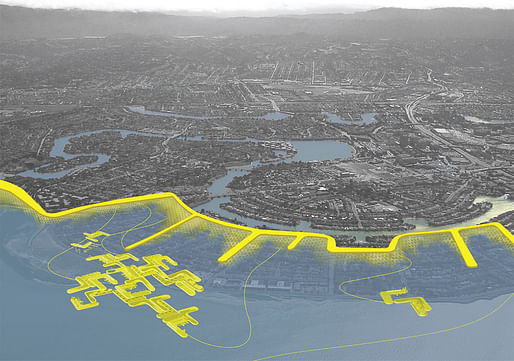
In anticipation of this week's event, Publish Or... bracket [GOES SOFT], we are showcasing a piece from the book each day this week. We hope to see you this Thursday!
ESP // Estuary Services Pipeline
by Bionic / Marcel Wilson
The Estuary Services Pipeline is a regional utility infrastructure designed to cope, adapt, respond, and leverage the changes presented by sea level rise in the 170 miles of coastline in the San Francisco Bay estuary. This century sea levels are projected to rise as much as 55” due to global climate change. This epic disaster will unfold slowly and threatens our most productive economies, infrastructures, cultures, and coastal ecologies. The sheer magnitude of the issue promises uncoordinated efforts among governments, agencies, and the private sector. Response is likely to be slow, late, and resource intensive. The pipeline is a coordinated large-scale force for the San Francisco Bay Metropolitan Area that leverages all available resources to engage the available time to offer efficiency, reduce disturbance, lower costs, and cope with known and unknown challenges that sea level rise and climate change present.
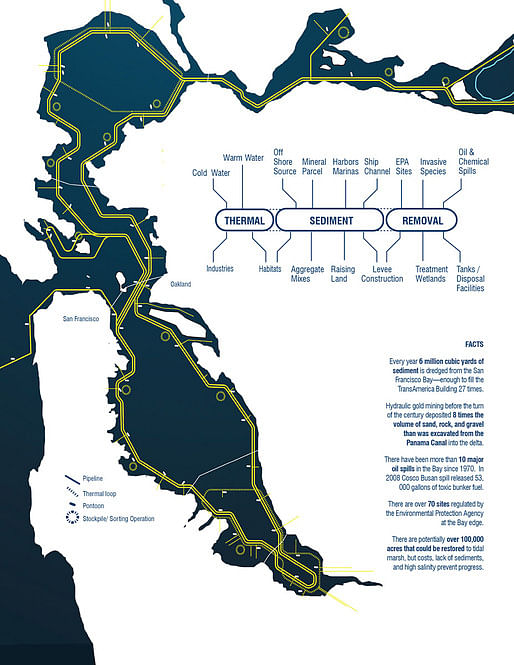
Image: ESP routing plan showing main line routes, thermal loops, and material stockpiles.

Image: ESP diagram of material sources, end uses, and placements.
Financed by a new financial market for sediment materials and transfer, the pipeline will facilitate a range of construction, infrastructure, and ecosystem management services: construct coastal defenses, supply industries, raise land, create habitats, clean up contamination spills, and manage invasive species.
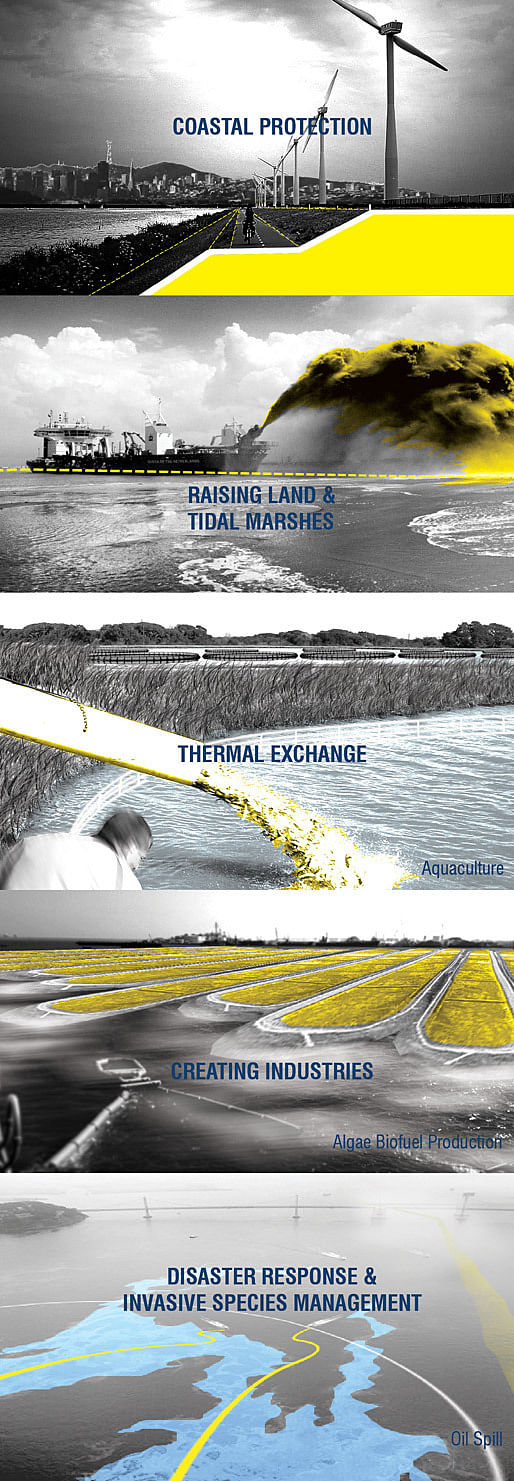
Image: Various pipeline services.
Service #1 // SEDIMENT :The pipeline conducts ecological and landscape materials from places where they are burdens (i.e. shipping lanes and ports) to places where they are needed to supply coastal defense, land elevation, and habitat creation projects. Any soft, loose, or liquid material can be conveyed including water, sediment, plant materials, and contaminated soils.
Service #2 // THERMAL: To cope with climate change influences, thermal exchange loops mediate water temperatures. Shallow areas would support industrial ecologies such as algal biofuels, aquaculture, remediation wetlands, waste water treatment, and native oyster beds. Thermal loops would supply the needs of these industries by exchanging warm water in shallow areas with cool water from deep trenches. Cool water would also augment stream flows to facilitate fish migrations back to spawning grounds.
Service #3 // INVASIVE/TOXIC: The San Francisco Bay supports over 250 invasive species that affect its ecological health and function. Plant species such as Wakame form dense underwater forests that harbor invasive predators, block light, and entangle boats. This pipeline and its utilities can maintain these populations and others as they migrate into the Bay over time. In times of disaster when large-scale quick response is needed, the pipeline would function as a conduit for evacuating spills and moving contaminants to holding tanks and settling ponds.
Service #4 // SUPPORT/PROXY: Support operations and other programs would be stationed on a fleet of pontoons that serve as new programmatic realms during the adaptive replacement of waterfronts over the next 100+ years. Forms are intentionally simple to allow for periodic relocation, maximum stability, and various configurations in flotillas. Along with support operations, pontoons would host civic-scale programs and income producing uses such that are difficult to locate in urban areas such as marinas and food production. Pontoons would also provide a substitute for waterfront programs displaced by coastal projects with long construction periods.

Image: Diagram showing pipeline service exchanges and economics.
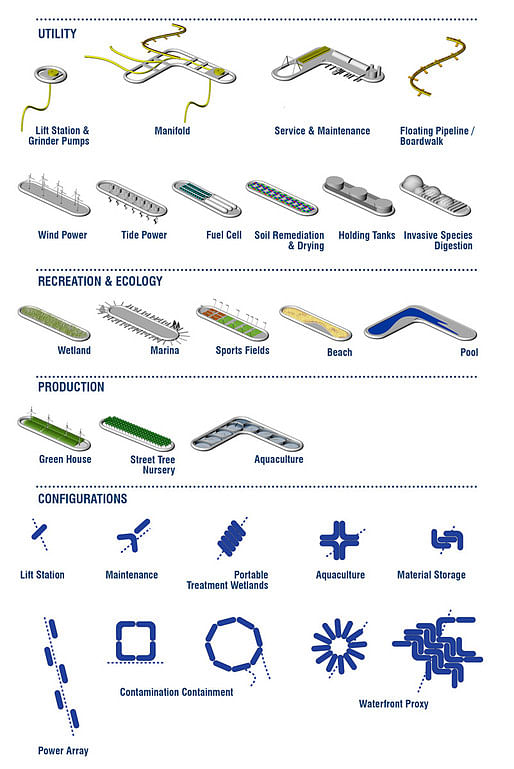
Image: Typical pontoon types, and configurations based on the tasks they perform.

Image: Timeline depicting long-range projects and coordinating material sources.
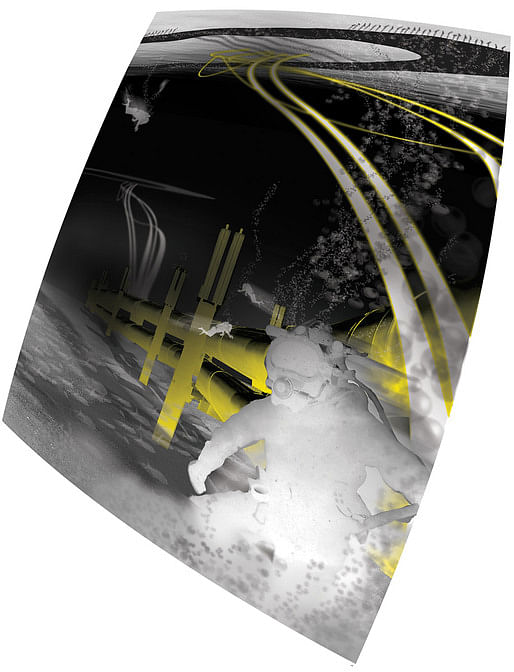
Image: Maintenance crews inspect the main pipeline routing and make repairs.

Image: Typical flotilla of pontoons hosting waterfront programs, pipeline operations, and productive industries.
Marcel Wilson is a licensed landscape architect based in San Francisco, CA. He is the principal of Bionic, and he teaches graduate level design and urbanism studios at the University of California Berkeley.
Previously featured bracket [GOES SOFT] projects.
No Comments
Block this user
Are you sure you want to block this user and hide all related comments throughout the site?
Archinect
This is your first comment on Archinect. Your comment will be visible once approved.